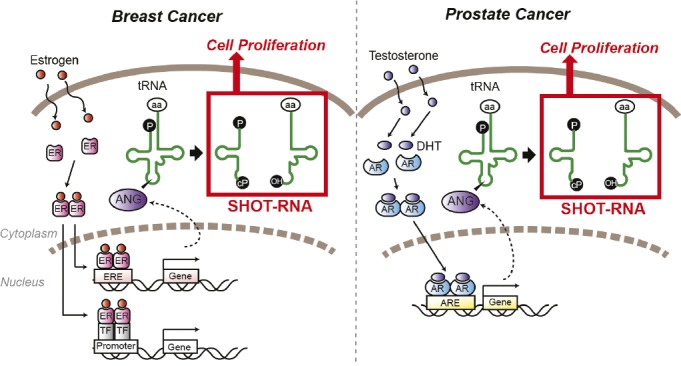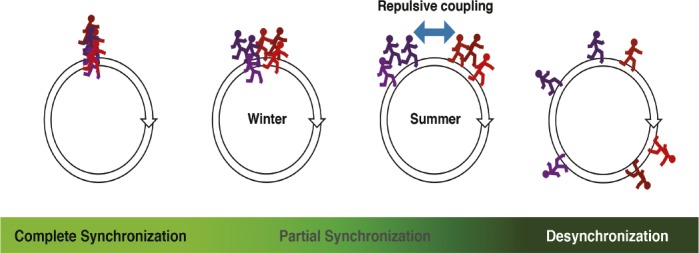Evaluating household-based interventions against influenza

Hong Kong’s high urban population density provides an ideal breeding ground for influenza. Image courtesy of Kenneth Chung (photographer).
Household-based interventions such as increased hand hygiene and face masks are crucial for combating influenza. The efficacy of such interventions is traditionally assessed by measuring their ability to reduce the proportion of household members who exhibit symptoms, but this method has limitations. Max Lau et al. (pp. 9094–9099) developed an alternative measure of intervention efficacy that incorporates both symptom reporting and viral shedding data and uses Bayesian techniques to account for unobserved transmission. The authors analyzed data from 322 households in Hong Kong that participated in a study of household interventions against influenza, and found that increased hand hygiene reduced infection hazard by 37%, and the combination of increased hand hygiene and face masks reduced infection hazard by 27.2%. The authors inferred the presence or absence of infections during the study period for all members of participating households, and estimated that traditional methods were able to detect only 61.7% of the infections that occurred in households. The results are consistent with previous findings that showed the efficacy of face masks and improved hand hygiene as nonpharmaceutical interventions against influenza. The study suggests that combining a well-designed disease transmission model and statistical inference can capture intervention efficacy more accurately than traditional methods, according to the authors. — S.R.
Factors promoting global coal consumption

Coal-fired power plant in Tianjin, China. Image courtesy of Wikimedia Commons/Shubert Ciencia.
Coal has reemerged in recent years as the predominant source of global carbon emissions. Jan Christoph Steckel et al. (pp. E3775–E3781) analyzed the factors underlying the consumption and related emissions of coal and found that rapidly developing countries largely rely on inexpensive coal to meet their energy demands. Reliance on coal is not limited to China and India but applies to other developing economies, particularly in, but not limited to, Asia. The authors report that price has played a role in the increasing amount of coal in the global energy market beginning in the late 1990s. Countries’ consumption of coal does not appear to be significantly affected by the availability of coal resources within the respective countries, according to the authors. This finding likely reflects global integration of the coal market. The results suggest that construction of coal-fired power plants may lock in coal as an energy source for several decades in developing countries currently ramping up their energy infrastructures. Achieving international carbon emission mitigation targets may likely require the international community to offer developing countries a cost-effective alternative to coal, according to the authors. — P.G.
Role of tRNA halves in breast and prostate cancers

Model for SHOT-RNA involvement in sex hormone-dependent breast and prostate cancers.
Transfer RNAs (tRNAs) are best known as adaptor molecules in protein synthesis, but recent evidence suggests that they can also serve as a source of small functional RNAs. Shozo Honda et al. (pp. E3816–E3825) identified tRNA halves, termed SHOT-RNAs, that are derived from mature tRNAs and are constitutively expressed in sex hormone-dependent breast and prostate cancer cells in culture and in cancer patient tissues. Suppressing the expression of the enzyme angiogenin by RNA interference reduced SHOT-RNA levels, suggesting that angiogenin cleaves mature tRNAs to produce SHOT-RNAs. Using a modified sequencing method, the authors determined that eight tRNAs were the source of nearly all SHOT-RNAs, and were formed by cleavage of the mature tRNA at nucleotide position 32–34. Suppression of estrogen receptor or androgen receptor expression also reduced SHOT-RNA levels, as did culturing cells in hormone-free medium, whereas addition of sex hormones to the culture medium increased SHOT-RNA levels. The finding suggests that sex hormones and their receptors promote formation of SHOT-RNAs. Finally, suppressing expression of SHOT-RNAs reduced the rate of cell growth, suggesting that SHOT-RNAs are required for cell proliferation. According to the authors, a tRNA-mediated pathway might play a role in tumorigenesis of hormone-dependent cancers, and SHOT-RNAs might represent possible therapeutic targets. — B.D.
Seasonal clock entrainment

Desynchronized oscillation phases between dorsal and ventral SCN is driven by GABA-mediated repulsive coupling.
The mammalian brain’s suprachiasmatic nucleus (SCN) contains circadian oscillators that can encode daily circadian rhythms as well as seasonal rhythms, although the mechanism of encoding of seasonal changes in daylight duration is largely unknown. Jihwan Myung et al. (pp. E3920–E3929) measured expression of the clock gene Bmal1 in cultured SCN from animals raised under various day lengths. The authors found that day length was likely entrained by couplings within the SCN network that either synchronize or desynchronize oscillation phases between the dorsal and ventral SCN. According to the authors, long day lengths increased the phase gap between ventral and dorsal oscillation, and shortened the overall period of SCN oscillation. Further, the authors found that changes in intracellular chloride concentration linked to changes in day length can alter the strength of the GABA receptor. Blocking GABA signaling in the SCN disrupted oscillation organization entrained by daylight, suggesting that modulation of intracellular chloride can influence synaptic signaling and determine the phase relationship and period of the dorsal and ventral SCN, according to the authors. — P.G.


